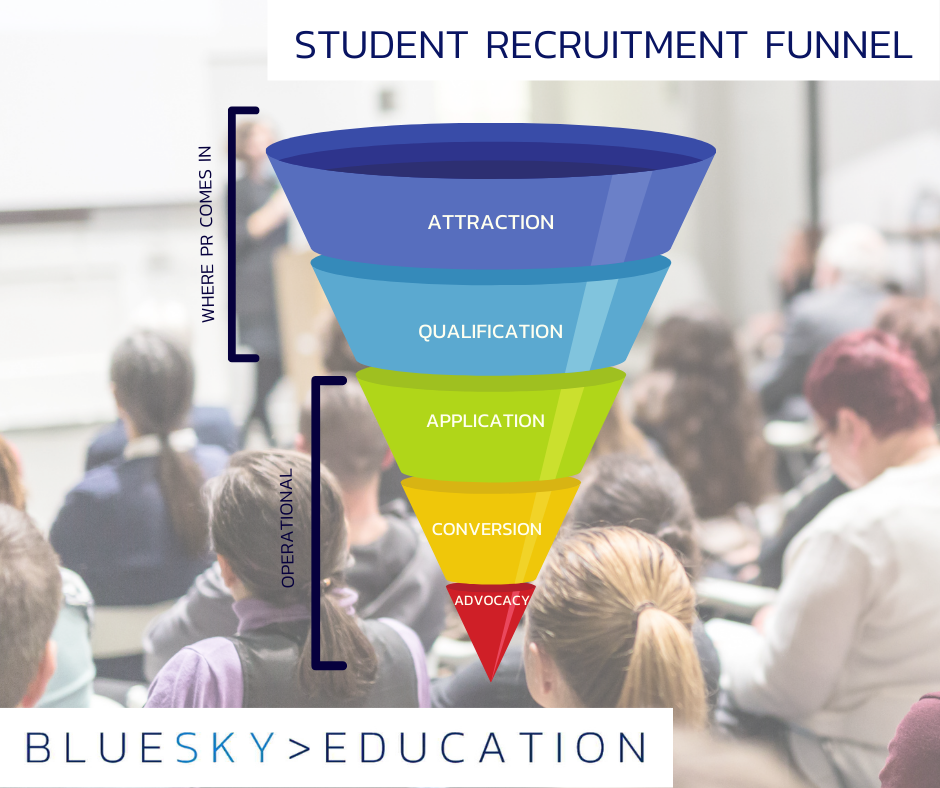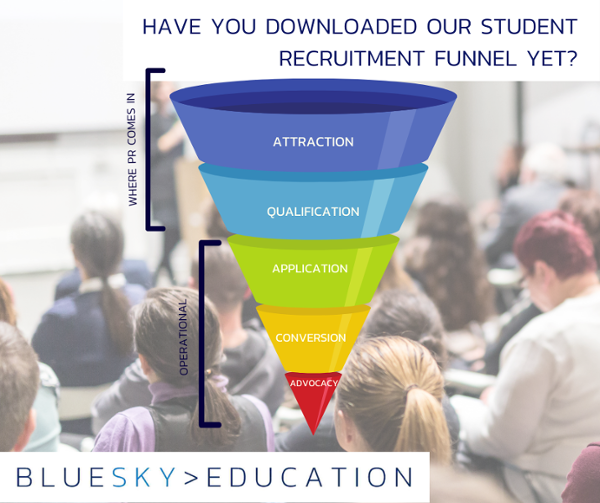(Here’s a hint: the answer is YES!)
When choosing where to study my own degree I didn’t just stick to reading university prospectuses and the rankings, I also took the time to look at what other people were saying about the institution and its programmes outside of what the universities chose to share. I read the stories of alumni and I took note of students who’d shared their experiences in newspapers, magazines and blogs.
That was in 2005 and for a Bachelors programme, but after spending over a decade working in University and Higher Education PR and communications it strikes me that whilst rankings, course content and student demands may have changed, the ways in which applicants decide an institution’s or programme’s worth remains the same.
Ultimately for me and for countless other applicants – be they applying to BA, MSc, or MBA programmes – it is these seemingly unfiltered and authentic perspectives that become the deciding factor of where and what to study. Something which an institution’s website, marketing materials, outreach and engagement couldn’t influence.
Which leads me to a very simple question for all those working in student recruitment to consider;
Does PR factor into any of your recruitment activities?
If your answer to that question is no, I’d strongly suggest you reassess how you work.
Because a well-considered and consistent PR campaign can do nothing but boost your applicant attraction and conversion rates, and for exactly the reasons I described above.
Think about it. How often have you conducted an entrance interview with a student and when asking why they chose to study at your institution, you’ve heard the answer that a friend, colleague, family member or peer had advised them to do so? Often, that steer has come from a member of the institution’s alumni community.
Those legacy applicants are, of course, already hovering on the periphery of your institution’s reach, just waiting to be activated when the time is right. But what about those applicants who have had no occasion or opportunity to engage with you before? Those in overseas markets for example, or outside of your typical applicant profile? How do you capture their interest, and stand out from the competition? The answer is, of course, PR, which gives you the ability to put yourself directly into their world and into their attentions via media engagement, rather than waiting for them to find you.
The student recruitment funnel
At BlueSky Education we’ve created and illustrated the Student Recruitment Funnel – a tool which sets out the five key steps that turn a potential applicant into an engaged prospect, a fully-fledged member of your student community and, ultimately, an advocate for your programmes – ready and willing to help you attract further applicants. These steps are;
- Attraction: Which concerns building your brand image, your reputation, refining your target prospects and identifying how you can best capture their attention and interest
- Qualification: Where a potential applicant takes the time to visit your site – perhaps repeatedly over the space of a few months, begins to familiarise themselves with your institution, programmes and values, and is compelled to make an enquiry
- Application: Concerning all things to do with turning an offhand enquiry into a formal application for a programme
- Conversion: The stage where the applicant receives an offer, and what it takes to turn that offer into a confirmation
- Advocacy: Covering actions that can create long-term ties with a student through their studies and once they graduate, turning them into a willing ambassador for your institution
Not only have we set out these steps, but our Recruitment Funnel provides a steer for where the efforts of a focused and consistent PR campaign would provide the most support to the process – I’m sure it won’t surprise you that PR plays a significant role at every stage. Let me explain how…
Attraction
By engaging with PR to turn your faculty into thought leaders, to share research with dedicated and respected industry outlets and to enable your programme leaders to become recognised and admired voices on the education process and the things that really matter to applicants, you are both building your brand and enhancing your reputation – as well as giving potential applicants a new source of information that your competitors are not. Engaging with media outlets, and becoming active on social platforms enables an institution to break out of its existing circles to begin speaking to a wider audience.
For example, by engaging in PR this French business school was given the opportunity to be featured in an article in the New York Times, recommending desirable global MBA programmes to its readers. Their inclusion in this piece helped the School to access an audience it hadn’t been able to reach before, and helped to boost American applicants to its MBA programme by 30%
Qualification
If your faculties are vocal and visible in the media in the places that matter to your target audience, you will provide continual prompts for those potential applicants to return again and again to your website, and take a greater interest in your offering. Securing the opportunity to have your programme directors and researchers share their perspectives publicly, or offer applicants advice via respected media outlets adds an extra layer of credibility to any educational offering you provide. Additionally, consistent media coverage can help build a feeling of familiarity between a publication’s readers and an institution – which can be a powerful tool for enabling an institution to define and promote its core values.
Application
Engaging in PR can create opportunities for student and alumni to share accounts of their study experiences beyond official marketing materials, in places that resonate with your applicant audience – such as QS Top Universities, or Study International or Poets&Quants for example. Theses accounts, as I shared at the beginning of this post, can be pivotal for convincing a prospect to become an applicant
Conversion
Building on the above, consistently creating outlets and opportunities for your students and alumni to be vocal about their study experiences and the return on their investment will help to reinforce your brand reputation, and keep what you can offer to an applicant at the front of their minds – helping to turn an offer into an acceptance
Advocacy
Using PR to give your student community a platform to share their successes on after graduation and beyond helps to create and secure those long-term ties with your alumni community – mobilising them into an army of advocates. My colleague Stephanie Mullins joined me recently in hosting a webinar, sharing advice on exactly how universities can turn their alumni into ambassadors – you can watch it for free here:
And, as you create those advocates they, in turn, help to enhance your attraction rates – turning your funnel into something of a circle!






